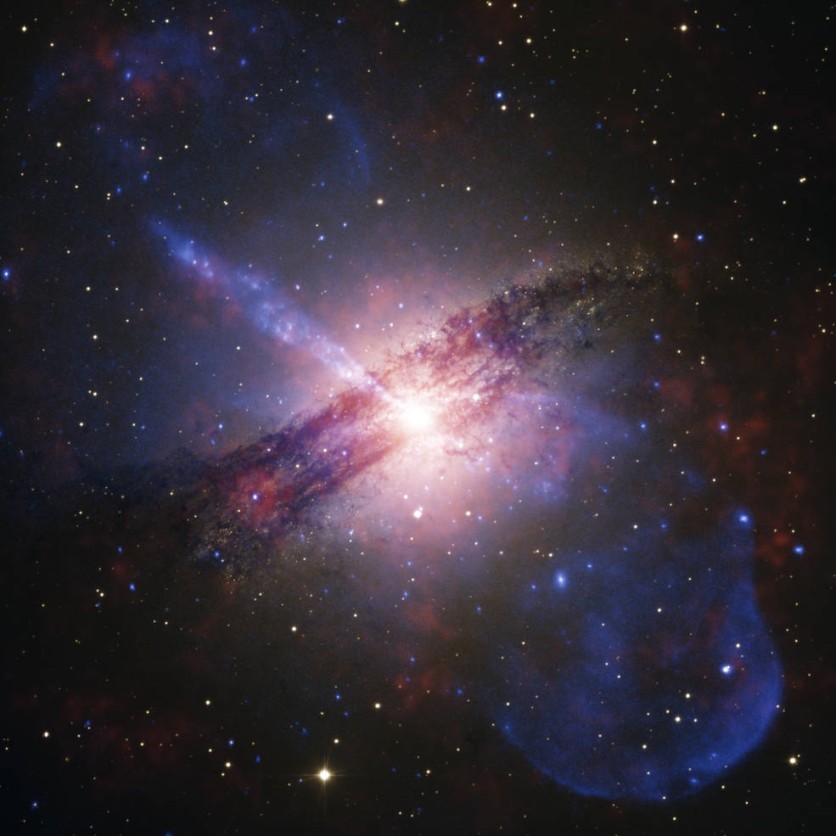NASA's telescopes have captured a dazzling image of Centaurus A (Cen A), a bright galaxy located 12 million light-years away from Earth with a monstrous black hole at its heart.

13,000 Light-years Long
The image, a composite of data from various NASA observatories, shows the galaxy's supermassive black hole at its center feeding off gas and dust while emitting huge jets of high-energy particles and other materials.
The jet extending from the black hole, as seen in the upper left corner of the image, is an astonishing 13,000 light-years long!
Moreover, there is a dust lane that encircles the center of the galaxy, thought to have been formed by a crash with a smaller galaxy millions of years ago.
The hues depicted in the image correspond to the data sources, with blue indicating X-ray light acquired by NASA's Chandra X-ray Observatory, orange representing X-rays detected by NASA's Imaging X-ray Polarimetry Explorer (IXPE) satellite, and the optical light from the European Southern Observatory in Chile appearing as white and gray.
Since 1999, the Chandra X-ray Observatory has been examining Cen A, but the launch of IXPE in 2021 has opened up new possibilities for studying the galaxy.
With its ability to measure the polarization of X-ray light, a property related to the arrangement of electromagnetic waves, IXPE allows scientists to investigate how particles are accelerated to extreme speeds and energies at cosmic objects like Cen A.
Scientists are particularly interested in understanding the cause of the X-ray emissions in the jets of Cen A, and they are relying on IXPE to provide new insights.
However, despite their efforts, scientists have not yet detected X-ray polarization at Cen A, suggesting that heavier particles, such as protons, are not responsible for generating the X-rays. Nevertheless, researchers are diligently examining the data to uncover more information.
Cen A is the fifth brightest galaxy in the sky, and its discovery has provided significant scientific breakthroughs that have helped shape our understanding of the universe. The supermassive black hole at the center of Cen A is just one example of the mysteries of the universe that are still being explored by scientists.
How Super Are Supermassive Black Holes?
Black holes are a thing of cosmic beauty, but their sizes are also beastly. Have you ever wondered just how super these supermassive black holes are?
Well, NASA has released an animation to show the monstrous scale of these large, voracious black holes.
Many large galaxies, including our Milky Way, are known to host supermassive black holes at their centers. These cosmic giants have a mass ranging from 100,000 to billions of times greater than the mass of our sun, as depicted in the animation.
If you want to learn more about these cosmic beasts and visualize just how large and powerful they are, check out this story.
Related Article : Astronomers Observe Shredded Star Gobbled Up by a Black Hole, Reveal Gas Shape Around a Tidal Disruption

ⓒ 2025 TECHTIMES.com All rights reserved. Do not reproduce without permission.




